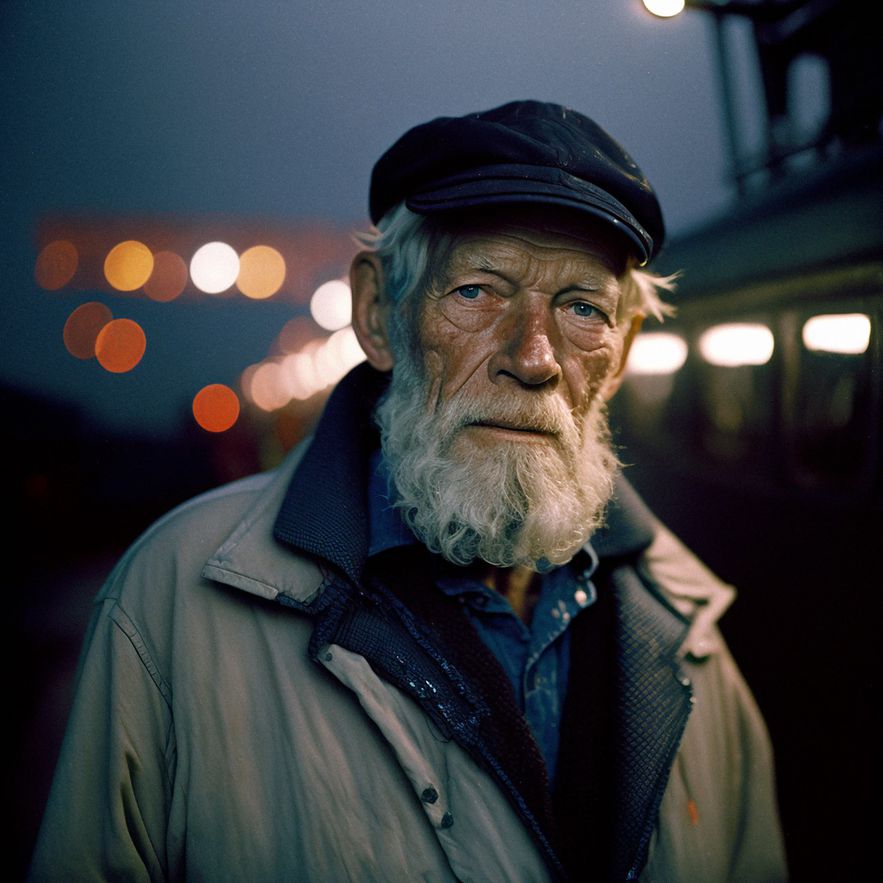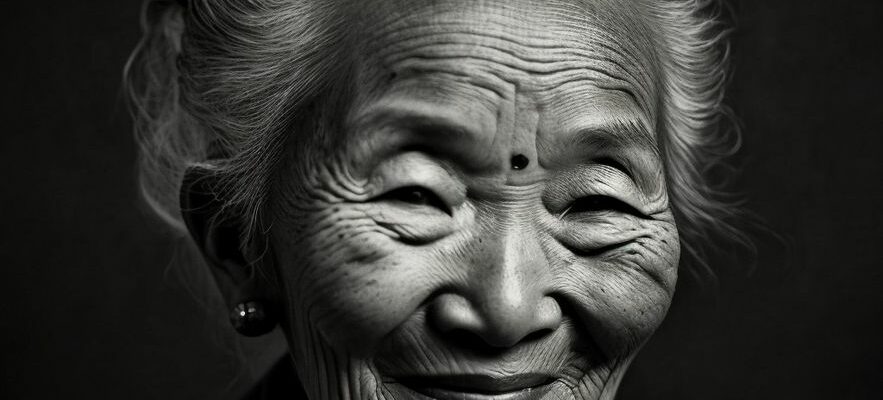It is enough to use the MidJourney image generator for a few hours to realize the extent of the threat weighing on a series of trades and sectors. In bulk, advertising illustrators, film directors, comic book authors, graphic designers, architects, or even photographers… All those who have to do with visual creation in one form or another will have to adapt quickly or perish.
MidJourney is what is called a generative artificial intelligence. There are others such as DALL-E, the version of OpenAI, or Stable Diffusion, but which are less efficient. Much like ChatGPT which has indiscriminately accumulated billions of words, MidJourney has been stuffed with hundreds of millions of images of all kinds, some taken from the public domain, and others protected by copyright. Everything is there: photos of landscapes, comic strips, portraits taken by great photographers, news reports, drawings by architects, or the works of renowned illustrators.
To create images from this happy mixture, we use “prompts”, in other words descriptions expressed in everyday language, with some technical specifications. To generate the image at the top of this article, which is supposed to represent an illustrator wondering what his future is (he’s not very young, besides), the prompt submitted to MidJourney looked like this: /imagine: realistic photo of a illustrator, working at his desk, pencil in hand, in an open space, dramatic light, film noir style”. Nothing very complicated. You can ask the algorithm to propose variants, change the lighting, the depth of field to give a photographic rendering or alter the character.
Another example: to generate the photo below, MidJourney was asked “a realistic photo, of an elderly Asian woman, wrinkled, with a bun, smiling, in black and white, Tri-X style [référence à une pellicule argentique]on a black background”. A pro would have added technical specifications to improve the rendering. But the result is already interesting:
This image of an Asian woman was generated by MidJourney.
© / MidJourney
We will use the same process to create a sci-fi illustration Avatar, a house inspired by Norman Foster or Frank Lloyd Wright overlooking the Mediterranean or even a giant factory abandoned in the middle of the desert. Equally spectacular is the logo creation, where we will specify what it is supposed to embody, in which graphic style, etc. To the point that one wonders who will still pay for the visual identity of a company…
The Mozarts of the “prompt”
There are experts in creating prompts like Photoshop or Illustrator virtuosos in the past. They perfectly master the grammar of the system, either to make sophisticated images of virtual worlds or, on the contrary, to create images resembling a photograph taken with a conventional camera. This month, the monthly Photo-Answers published on the cover this image indistinguishable from a professional photo:

This image of a fisherman was generated by MidJourney at the request of Photo-Answers Magazine.
© / MidJourney, directed by Thibaut Godet, Answers-Photo Magazine
Its author, the editor-in-chief of the magazine Thibaut Godet, made some 300 versions to achieve the desired realism.
Alexandre Saudinos, co-founder of Parallel Cinema and also a great specialist in new technologies applied to cinema, is in pre-production of an ambitious feature film. It is a medieval saga summarized in an ultra-precise “bible”, setting out its intention in the smallest details: the weathered faces, the accoutrements of the time, the threatening buildings, the dark atmosphere of the Middle Ages. This document is essential to sell the idea to the distributor, to frame the work of the screenwriters, the director of photography and obviously the director. “A few months ago, I would have called on specialized illustrators, concept artists, whom I would have had to brief in detail to impregnate them with our ideas, with countless round trips, a complicated process, long and expensive,” says Saudinos. There, I created the entire environment for the film with MidJourney in a few days. Everything was defined with a few dozen prompts and hundreds of tries, describing in detail the look and even the personality of the heroine to embody a free and courageous woman – with facial features, the complexion of her skin… We literally shaped the characters with descriptions made in MidJourney.”
Another sector concerned: advertising creation. Agencies are often the first to adopt these new tools. They rushed to MidJourney. “It’s a profound change that happens very quickly, explains Ivan Beczkowski, co-president and creative director of BETC FullSix, which makes massive use of MidJourney in the design phases. But we can’t do anything with these images. We do not sell them because we cannot guarantee their originality. On the other hand, we use them to make models or moods“, a reference to explorations of visual environments, the atmosphere of a brand. One of BETC FullSix’s clients is Disney, for example, all of Marvel’s characters are present in the corpus of images used to train the MidJourney algorithm. “If you want to produce a Spider-man that looks up to the sky in a specific environment, it works very well. The red of the cape won’t be the right one, but we’ll deal with it later”.
The arm of honor to intellectual property
For now, MidJourney and comparable services superbly ignore any notion of copyright. They capture everything possible in their nets. And the volumes are dizzying. The public database LAION-5B (For Large-scale Artificial Intelligence Open Network) was created by a German non-profit organization. It contains 5.8 billion images, 3 billion of which include descriptions in more than a hundred languages. This type of dataset is constantly expanding: in one year, the size of the LAION database has been multiplied by fourteen!
Needless to say, LAION did not sort out photos or illustrations that were in the public domain and copyrighted works. Moreover, when we dive into the bowels of these giant databases which are used to learn algorithms, we discover that they have absorbed the best of the world’s photographic heritage. The fact of being able to ask the MidJourney to generate an image in the style of Ansel Adams (a great American landscape painter) or a portrait in the style of Richard Avedon comes precisely from the fact that these two immense photographers saw their work, however jealously protected by armies of lawyers, captured entirely in LAION.
“We can find elements of style of photographers in an environment that is totally foreign to them, notes Philippe Durand, photographer, contributor to Photo-Answers. If you apply the style of an Edward Weston to the buildings of Manhattan, you will obtain the same softness as for his still lifes.”
Some photographers manage to limit copyright infringement by getting MidJourney not to allow their name to be used in a prompt. This is the case of Steve McCurry, the great photographer of the National Geographic whose style cannot, in principle, be reproduced. Except, notes Philippe Durand, that it is hardly complicated to reproduce the parameters of the famous photo of the little green-eyed Afghan girl.
We are therefore inverting the norm on copyright: instead of it being the broadcaster – the LAION image database for example or a generator like MidJourney – who asks artists for permission, it is these to ask that their work be excluded from the great vacuum cleaner. Asked by the American site The VergeDavid Holz, the founder of MidJourney, admitted that at the moment there is no procedure for a writer to exclude themselves from the system, but that he was open to the idea – it’s nice to His part.
For Ivan Beczkowski, the problem should be solved: “Things will be organized: a company like MidJourney will sign an agreement with large image banks like the Getty agency according to a system that will respect copyright. In any case, this is not new: if today one of our illustrators produced a drawing in the style of Sempé, it would end up in court. Moreover, we always ask for validation from the artist when we want to draw inspiration from it for a visual creation; we’re not going to have fun doing Jeff Koons without asking permission from his studio…”
But many are wondering about the future of a visual creation generated algorithmically and drawing its “inspiration” from others. For Christophe Tricot, CEO of La Forge AI, which is testing concepts for mobile applications and websites for the health sector with MidJourney, “it would be interesting to explore the limits of the generator by training it with its own creations; inevitably the system would self-intoxicate into a kind of chaotic jumble”.
The boss of the BETC FullSix agency remains confident: “To avoid the pitfall of standardization, we are going to need original creation more than ever. I think we need to invest both in AI and in silver photography, summarizes Ivan Beczkowski. This originality, this authenticity will retain great value.” It’s the only thing that will push a photographer or an illustrator not to start his day with gin at nine o’clock in the morning.
